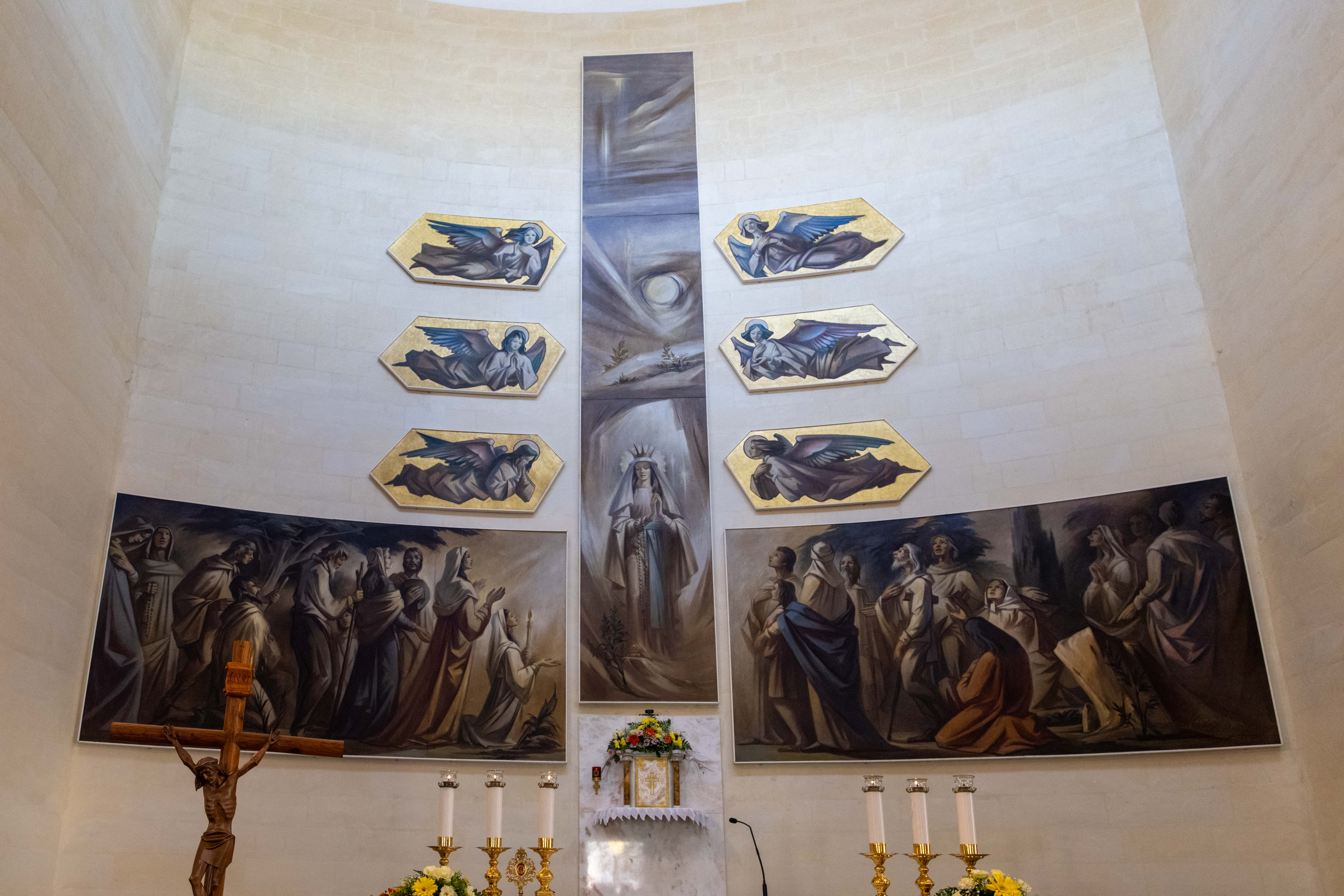
The fragmented altarpiece
The first reflection about the titular painting at Our Lady of Lourdes Parish Church, Paola
Immaculate Mary,
your praises we sing.
You reign now in splendour
with Jesus our King.
In all her apparitions, the Blessed Virgin Mary repeatedly insists on the need to pray the Rosary. Although that is a Marian prayer, the mysteries that are contemplated revolve around the mystery of Christ, the Son of God and her Son. Among the most well-known apparitions, and the one that draws devotion from around the world, is the one at Lourdes, where Mary appeared for 18 times to a humble girl, St Bernadette Soubirous, between 11 February and 18 July 1858.
Accordingly, over the coming weeks we shall start a series of reflections based on the titular altarpiece in the parish of Our Lady of Lourdes, Paola, which this year is commemorating its fiftieth anniversary. This masterpiece by Emvin Cremona uniquely consists of nine sections rather than being one whole painting. Each part is distinct from the others, with bare spaces in between exposing the wall on which they hang. At the same time, no single part tells the whole story of the devotion, the apparitions, and the miracles by itself, shorn of the other sections.
This original kind of altarpiece in this parish church reminds us of the tension between the parts and the whole, between the ‘all’ and the fragments. Pope Francis speaks of this tension in paragraphs 234 to 237 of his Post-Synodal Apostolic Exhortation Evangelii Gaudium. Although clearly stating that the whole is greater than the part, the ‘all’—that which is bigger, the more complete picture of reality often presented in a fragmented way—must integrate all the constituent parts without eliminating any. To illustrate this, Pope Francis discards the sphere as model and instead adopts the illustration of the prism which reflects the convergence of all its parts, each of which preserves its distinctiveness.
No experience may be judged out of its context. No person can be understood away from the circumstances in which that person lives. No people can be understood devoid of the land which it inhabits and the history which has shaped it. It is the same with the Christian experience: no Christian can be a lone Christian, but always part of a family, of the Church. And neither can we explain away the Church from a single perspective since the Church does not exist up in the air, but in the congregation of all those who believe in Christ.
Enduring fragmentation is very close to us as human beings and as Christians. I feel divided within myself; there is division between us; we even belong to different churches and denominations. Stop for a while and ponder this most existential of experiences. Do not allow yourself to conjure up quick solutions, or to despair. Entrust all of this to Mary, for just as God has looked with favour on his lowly servant, so likewise will she look at us to urge us on the only true Way, that is Christ.



